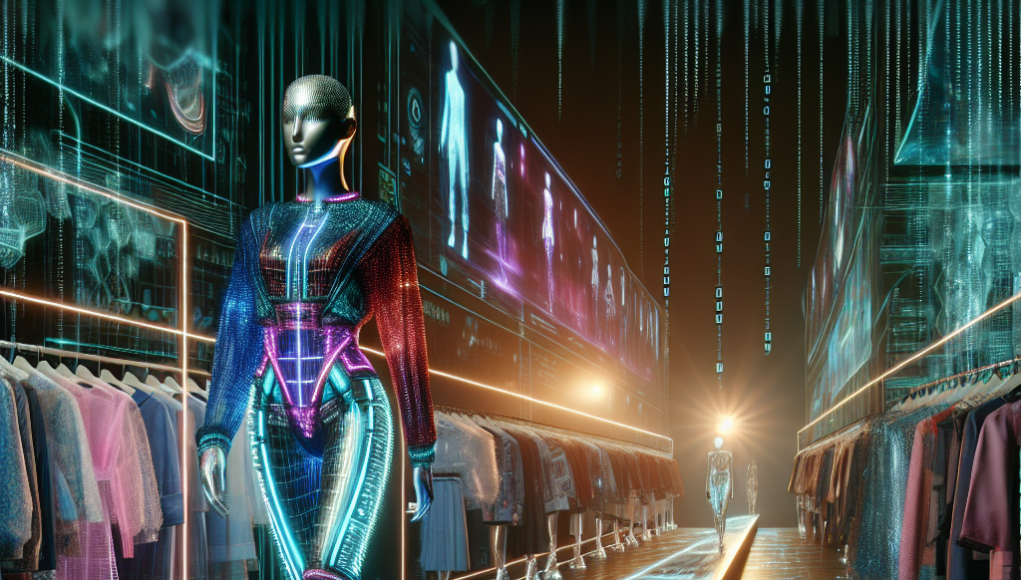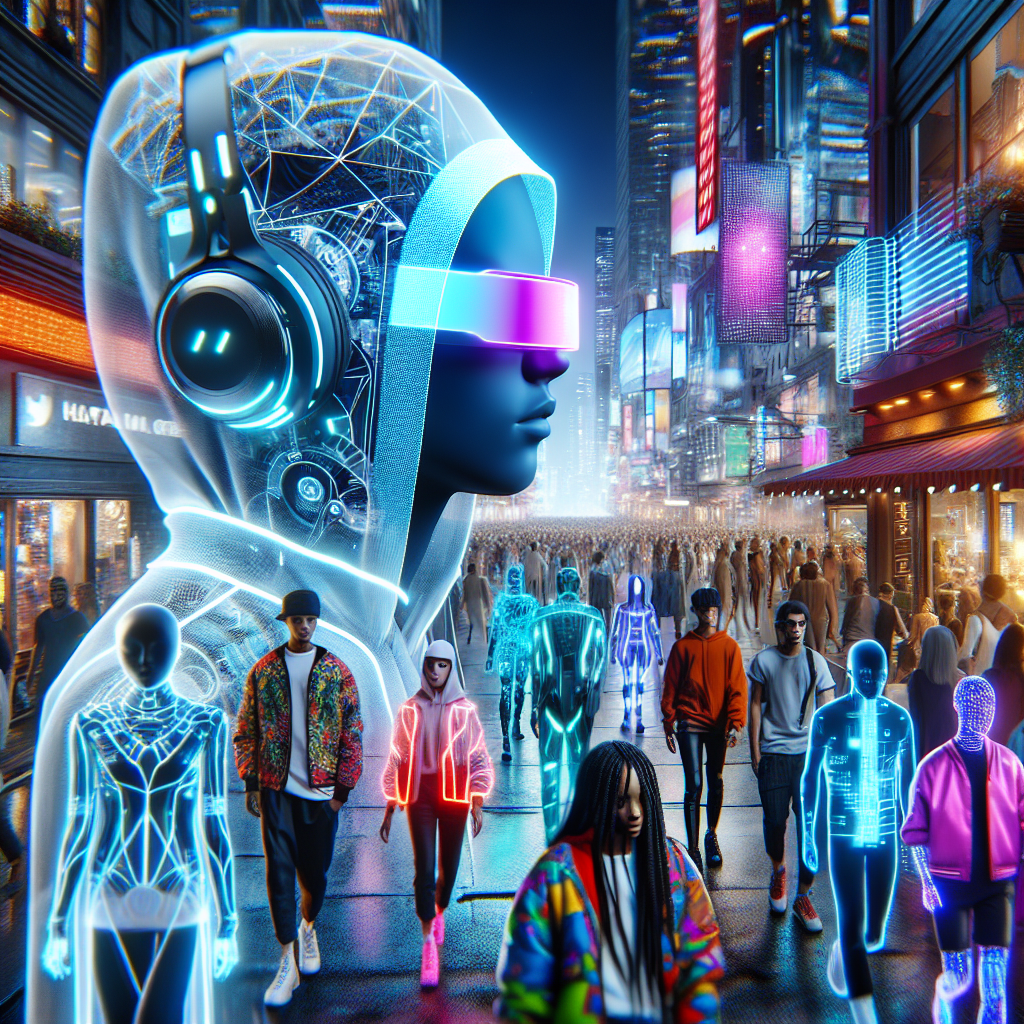Exploring Emerging Trends in the World of Digital Fashion
In the ever-evolving realm of fashion, digital innovation is carving out a new frontier, transforming how we perceive, create, and engage with clothing and accessories. Digital fashion, an intersection of technology and style, is not just a fleeting trend but a burgeoning sector that promises to redefine the fashion industry. From virtual runways to digital wardrobes, this article delves into the rise of digital fashion, the technologies propelling it forward, and its far-reaching impact on traditional fashion industries.
The Rise of Digital Fashion: A New Frontier
The world of fashion is witnessing a paradigm shift as digital fashion emerges as a new frontier. This innovative sector has captured the imagination of designers, consumers, and tech enthusiasts alike, offering a virtual playground where creativity knows no bounds. Digital fashion encompasses everything from virtual clothing and accessories to entirely digital fashion shows, providing an immersive experience that challenges conventional fashion norms. Unlike traditional fashion, digital fashion is not constrained by physical limitations, allowing for boundless creativity and experimentation.
The rise of digital fashion can be attributed to the increasing demand for sustainable and ethical fashion solutions. As consumers become more environmentally conscious, the allure of digital fashion lies in its ability to reduce waste and carbon footprints. Virtual garments can be tried on, shared, and even worn in digital spaces without the need for physical production, making it an attractive option for eco-conscious consumers. This shift towards digital fashion also reflects changing consumer habits, where the digital realm is increasingly becoming a space for self-expression and identity exploration.
Social media platforms have played a pivotal role in propelling digital fashion into the mainstream. With the rise of virtual influencers and digital avatars, fashion brands are embracing digital fashion to engage with tech-savvy audiences. These platforms provide a stage for digital fashion designers to showcase their creations to a global audience, breaking down geographical barriers and democratizing access to high fashion. As a result, digital fashion is not just a niche market but a rapidly growing industry with significant commercial potential.
Moreover, the pandemic has accelerated the adoption of digital fashion as physical fashion events and retail experiences were disrupted. Virtual fashion shows and digital collections became the norm, allowing designers to reach audiences worldwide without the constraints of physical venues. This shift has not only kept the industry afloat during challenging times but has also opened up new opportunities for innovation and collaboration. The rise of digital fashion signifies a transformative moment in the industry, where technology and creativity converge to reshape the future of fashion.
Digital fashion is also redefining the concept of ownership and consumption. In a world where fast fashion dominates, digital fashion offers a sustainable alternative that prioritizes experience over possession. Consumers can purchase digital garments for their avatars, wear them in virtual worlds, and even trade them as digital assets, blurring the lines between fashion and digital collectibles. This new model of consumption challenges traditional notions of fashion ownership and paves the way for a more sustainable and inclusive industry.
As digital fashion continues to evolve, it is poised to become a driving force in the fashion industry. Its rise represents a shift towards a more inclusive, sustainable, and innovative future, where fashion knows no boundaries. As designers, brands, and consumers embrace this new frontier, digital fashion is set to redefine the industry, offering endless possibilities for creativity and self-expression.
Key Technologies Shaping Digital Fashion Trends
At the heart of digital fashion’s evolution are key technologies that are shaping its trends and possibilities. Augmented reality (AR) and virtual reality (VR) are leading the charge, offering immersive experiences that bridge the gap between the physical and digital worlds. AR technology allows consumers to try on virtual garments in real-time, using their smartphones or smart mirrors, enhancing the shopping experience with interactive and personalized features. Meanwhile, VR enables designers to create entirely digital fashion shows, providing audiences with a front-row seat to the latest collections from the comfort of their homes.
Blockchain technology is another crucial component driving digital fashion trends, particularly in the realm of digital ownership and authenticity. By leveraging blockchain, fashion brands can create digital certificates of authenticity for virtual garments, ensuring transparency and traceability. This technology also facilitates the creation of non-fungible tokens (NFTs), allowing designers to sell unique digital fashion pieces as digital collectibles. NFTs have opened up new revenue streams for designers and provided consumers with a way to invest in digital fashion, further blurring the lines between fashion and digital assets.
Artificial intelligence (AI) is playing a transformative role in the design and production of digital fashion. AI-powered tools enable designers to create intricate and innovative designs with unprecedented speed and precision. Machine learning algorithms analyze fashion trends and consumer preferences, providing valuable insights for designers to create personalized and data-driven collections. AI also streamlines the production process, reducing costs and minimizing waste, making digital fashion an attractive option for sustainable fashion practices.
3D modeling and rendering technologies are revolutionizing the way digital garments are designed and visualized. These tools allow designers to create lifelike digital garments with intricate details and realistic textures, enhancing the overall quality and appeal of digital fashion. 3D modeling also facilitates virtual fittings, enabling consumers to visualize how digital garments fit and move on their avatars, creating a seamless and engaging shopping experience. As these technologies continue to advance, the potential for hyper-realistic digital fashion becomes increasingly viable.
The integration of Internet of Things (IoT) technology into digital fashion is creating new possibilities for interactive and connected clothing. IoT-enabled garments can collect and transmit data, offering real-time feedback on factors such as fit, comfort, and environmental conditions. This data-driven approach not only enhances the functionality and adaptability of digital fashion but also provides valuable insights for designers and brands to create more personalized and responsive collections.
As these technologies continue to evolve, they are reshaping the landscape of digital fashion, offering new opportunities for creativity, innovation, and sustainability. By harnessing the power of AR, VR, blockchain, AI, 3D modeling, and IoT, digital fashion is poised to revolutionize the industry, providing consumers with immersive and personalized experiences that transcend traditional fashion boundaries.
Impact of Digital Fashion on Traditional Industries
The rise of digital fashion is having a profound impact on traditional fashion industries, challenging established norms and prompting a reevaluation of conventional practices. One of the most significant impacts is the shift towards sustainability and eco-consciousness. As digital fashion eliminates the need for physical production, it reduces waste and minimizes the environmental impact of fashion, aligning with the growing demand for sustainable solutions in the industry. This shift is prompting traditional fashion brands to rethink their production processes and explore digital alternatives to meet consumer expectations.
Digital fashion is also transforming the retail landscape, offering new possibilities for engagement and interaction. Virtual try-ons and digital showrooms are becoming increasingly popular, providing consumers with a convenient and immersive shopping experience. This shift towards digital retail is challenging traditional brick-and-mortar stores to adapt and innovate, integrating digital technologies to enhance the customer experience. As a result, the line between physical and digital retail is becoming increasingly blurred, creating a hybrid model that combines the best of both worlds.
The fashion industry’s supply chain is also experiencing a transformation due to the rise of digital fashion. With the ability to create and distribute digital garments instantly, the need for traditional manufacturing and logistics is reduced. This shift is prompting brands to reevaluate their supply chain strategies, focusing on digital solutions that offer greater efficiency, flexibility, and sustainability. By embracing digital fashion, traditional industries can streamline their operations and reduce costs, creating a more agile and responsive supply chain.
The impact of digital fashion extends beyond the fashion industry, influencing adjacent sectors such as entertainment and gaming. Virtual fashion is becoming an integral part of digital experiences, with brands collaborating with gaming companies to create exclusive digital collections for avatars. This convergence of fashion and gaming is opening up new revenue streams and marketing opportunities, allowing brands to reach a broader audience and engage with consumers in innovative ways. As digital fashion continues to gain traction, its influence on entertainment and gaming is expected to grow, creating new synergies and collaborations.
Digital fashion is also reshaping the role of fashion designers and creatives, offering new opportunities for innovation and expression. The ability to create and showcase digital garments without the constraints of physical production allows designers to experiment with new materials, styles, and concepts. This shift is leading to a more inclusive and diverse industry, where emerging designers can gain recognition and visibility without the need for traditional resources. As digital fashion continues to evolve, it is empowering a new generation of designers to push the boundaries of creativity and redefine the future of fashion.
In conclusion, the impact of digital fashion on traditional industries is both transformative and far-reaching. By challenging established norms and introducing new possibilities, digital fashion is driving a shift towards sustainability, innovation, and inclusivity. As traditional industries adapt to this new reality, they are poised to benefit from the opportunities and efficiencies that digital fashion offers, paving the way for a more sustainable and dynamic future in the world of fashion.
As we navigate the exciting world of digital fashion, it is clear that this emerging trend is more than just a technological novelty—it is a transformative force that is reshaping the fashion industry as we know it. By embracing key technologies and challenging traditional practices, digital fashion offers a glimpse into a future where sustainability, creativity, and innovation coexist harmoniously. As designers, brands, and consumers continue to explore the possibilities of this new frontier, the world of fashion is set to embark on a journey of unprecedented change and opportunity.









